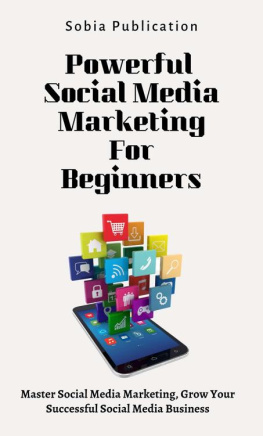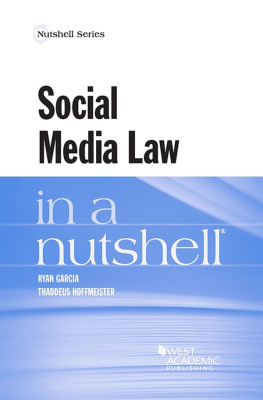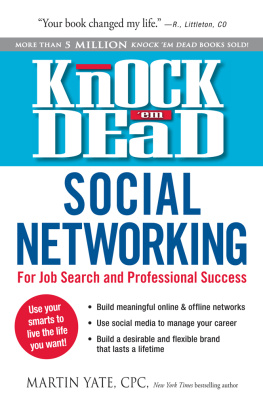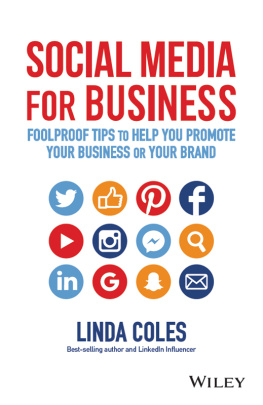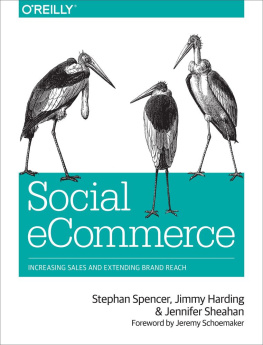Unleash user-driven innovation beyond your wildest imagination, for a fraction of the cost of creating it yourself!
Use crowdsourcing to create marketable new products and contentand blow away your traditional competitors!
When the Inevitable Surprises Occur...Are You Ready to Diffuse the Situation with the Right Questions?
Ask the right questions to recover from any surprise and transform shocks into breakthroughs!
Terry J. Fadem
ISBN: 978-0-13-706123-5
$1.99
Social Networking for Promoting YOU as a Brand
Brian Solis and Deirdre Breakenridge
Social networks, for you as a Public Relations professional, are becoming primary mechanisms for connecting with people, ideas, brands, news, and information. However, thinking of social networks as just personal playgrounds will come back to haunt you and any company you work with in the future. Yes, beware of the things you share online because theyre indexed in search engines and live on the Web for a very long time. Yes, your activity appears in search engines such as Yahoo! and Google. And your blog posts, Flickr photos, comments, Twitter updates, and so on, show up in Google Alerts and also in Technorati. You need to think about online participation in an entirely different and more useful and productive way.
Participation and Visibility
You are the brand. Use the power of search and Social Media to your advantage.
This is about leveraging your personal social graph and Social Media tools and channels to more effectively cultivate online relationships and, at the same time, leverage the network to increase visibility for your expertise, reputation, and activity. As a marketer, your collective brand can also impact and bolster the brands you might represent. The one thing that connects everything is you. You are on the frontlines for everything related not only to you, but also to everything you represent, now and in the future.
You are the hub of your online activity. With every comment, new profile, update, post, image, or video uploaded, you are intentionally or inadvertently constructing an online persona that, at the very least, contributes to and ultimately creates a personality that is open to perception and interpretationwith or without your implicit direction. Why leave pieces for people to find across the Web through searches and the various platforms you choose to engage in? Reel it in, package it, and present it in a compelling way.
Its not just about the ability to connect with people. Its about creating, cultivating, and promoting a strategic online presence and personal brand. Remember, participation is marketing. This is your online identity and your online brand. Its yours to create, cultivate, define, and manage.
Think about it. Whether youre an entrepreneur, part of a company, or a student, remember that your Web activity is an open book that remains open for all to read for years to come. Those who are strategic about how they participate online will elevate above the masses that choose to experiment and learn the hard way.
The bottom line is this: Whether youre applying for a job, pitching a business prospect, or representing a bigger brand in Social Media engagement, you will be Googled for reference. Thats just the way it is. Besides, you know you Google yourself, too. Its one of our guilty little pleasures.
Weve maintained profiles on Facebook and LinkedIn for a few years and still do. LinkedIn was sort of Web 1.0s version of a social network that attracted business professionals and connected them with each other (and introduced them to their extended contacts).
As PR professionals, LinkedIn will serve you well, enabling you to manage a virtual Rolodex, cultivate relationships, find people you need to know, promote your business and areas of expertise, ask questions to crowd-source qualified responses, and help valuable contacts to find you. LinkedIns core benefits are valuable as an online static rsum, combined with links and a list of contacts ripe for networking and pilfering. However, the personal network depends on connections and introductions to flourish.
In contrast, Plaxo started as an online address book and calendar that synched with all popular contact-management tools, not just for your own database, but for your contacts, too. It has evolved into a social network and also presents a feed that collects updates from the other social tools you might use outside of the service. For example, if you use Flickr or YouTube, write a blog, or send tweets on Twitter, Plaxo can receive those updates and present them on your profile so that connections can view them in one place. Facebook also offers this capability in the MiniFeed feature.
We cant leave MySpace out of the discussion because it is based almost on the same business model as Facebook but is executed differently and targeted at a pop-culture demographic. MySpace is one of the most popular and successful social networks online, but Facebook is quickly becoming a dominant force in its own right.
With MySpace, profiles are completely over the top with animation, music, video, and atrocious template designs. But with Facebook, users can customize their profile with specific content, applications, and correspondence that further enhance their online aggregated presence. Facebook offers customization, scalability, elegance, and cohesion, collectively representing the tools, services, people, and activity that are important to you.
In terms of profile aggregation, many third-party applications can help you centralize your disparate online profiles and activity, and integrate RSS feeds for services you use that dont yet have a Facebook application availablemicroblogs, blogs, pictures, videos, bookmarks, and so forth. Not only does this channel your activity, but it also promotes your brand in your own way and showcases your ideas and expertise. Think about it: You can cleanly package everything you do online into one strategically crafted profile for all to enjoy. Its also a way of promoting your expertise and staying in contact with peers and other influential people.



